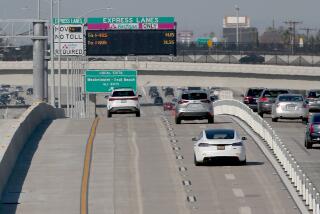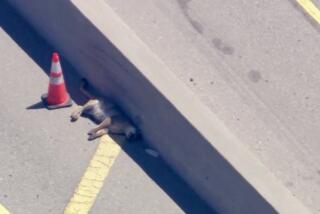The Next L.A. / Reinventing Our Future : Transportation : IDEA FILE: Smart freeways
- Share via
How It Works
Smart freeways, or smart corridors, are congestion-fighting projects that concentrate a combination of technologies and tactics to increase vehicle capacity on heavily traveled corridors.
For example, a smart corridor planned along the Santa Monica Freeway will use a communications system to transmit traffic information to drivers so they can react and avoid congestion. It will also provide a rapid response towing team to quickly clear accidents and a computer system that can gather large amounts of data from surveillance cameras and sensors in the pavement and transmit that information to state and city traffic-control centers and police dispatchers. Traffic experts in the control centers can use the data to adjust traffic signals to move cars along faster.
Benefits
They increase the traffic capacity on existing roadways.
Short-Term or Long-Term Impact?
They have only long-term impact because it takes time to build and implement, especially on a large scale.
Supporters
State and local transportation officials support smart corridors as a way to increase capacity on existing roads by up to 15% by improving available roadways instead of building new thoroughfares. They say it is less expensive to improve existing roadways than to build new roads and freeways.
Opponents
Critics cite the expense; it’s too high.
The Costs
The 12.3-mile smart corridor project along the Santa Monica Freeway has a price tag of $47 million, funded by the local, state and federal governments. It would cost hundreds of millions of dollars to install smart corridors on the region’s major traffic routes.
REALITY CHECK
Because of the cost, smart corridors will probably only be feasible in a limited number of the area’s most heavily congested roadways. Maybe.
More to Read
Sign up for Essential California
The most important California stories and recommendations in your inbox every morning.
You may occasionally receive promotional content from the Los Angeles Times.










